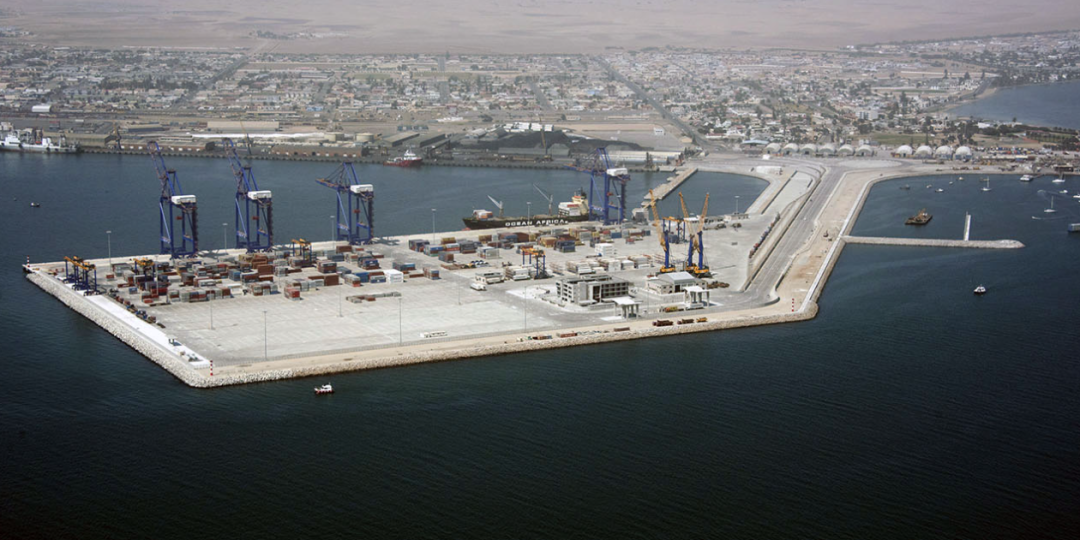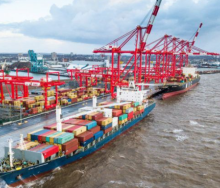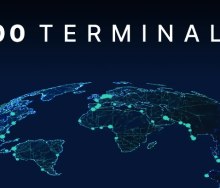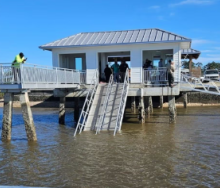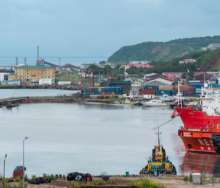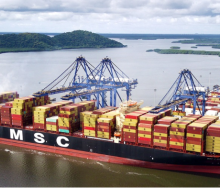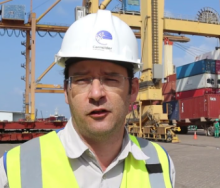Namibia’s Port of Walvis Bay is taking the next big step since inaugurating its new container facility, revamped at a cost of $300 million and intended for privately run operational management through Terminal Investment Limited (TiL), a process that has been delayed for more than a year.
Private stakeholder involvement at the port, which was initially set for second-quarter commencement in 2023, will now come into effect on October 1 after state-owned entity Namport and MSC-subsidiary TiL finalised the details of a local entity, Terminal Investment Namibia (TiN).
A statement released by Namibia’s ports authority said: “Namport and TiL are pleased to announce hand-over of the container handling operations at the port to TiL, through its newly formed Namibia subsidiary, TiN.”
It marked the commencement of the long-awaited concession on the first of next month, Namport said.
“This strategic decision was premised on the need to attract private capital to invest in, amongst others, the widening and deepening of the channel at the port, the acquisition of new equipment and new systems, the need to drive competitiveness through improved efficiencies, harnessing more cargo volumes to maximise utilisation of the terminal, and to preserve and grow levels of employment.”
In respect of increasing volumes through the port, industry thought leader and managing director at Novaship, Willie Prosser, told Freight News during a visit to Namibia in March 2023, that the port was simply not seeing the volumes they had hoped for.
He said although it was thought to be a post-Covid hangover of slow re-uptake, the port’s logistics industry was waiting in anticipation for the promised hinterland cargo that the revamped port was supposed to have sparked.
Sarah Walker, a sales director at Stacks Logistics at the time, since then sold to ISS Global Forwarding, said Walvis Bay was losing business on account of stiff rates.
Capable of handling 750 000 TEUs, Namport said the agreement with TiN “is expected to play a crucial role in bolstering Namibia’s position as a key logistics hub in Southern Africa, through increased shipping connectivity, heightened vessel traffic, enlarged container handling capacity and enhanced operation efficiencies”.
Namport CEO Andrew Kanime said: “We’re excited about this partnership. This watershed development underscores our commitment to improving port operations and addressing the growing demands of the Namibian and regional markets.”
The edge TiN is expected to give MSC in the wider market is further bolstered by last year’s emergence of Africa Global Logistics after MSC acquired Bolloré Africa Logistics.
The concession agreement, Kanime said, “will without doubt entrench Namibia and Namport’s competitiveness amongst other coastal states and developing ports in the region, and significantly contribute towards the attainment of Namibia’s vision to be the logistics hub for the region”.
The privatisation development follows as Angola’s much-vaunted corridor connecting the Port of Lobito with the Copperbelt on the border of the Democratic Republic of the Congo (DRC), continues to grow in industrial appeal, offering as it does the shortest possible distance for pit-to-port evacuation and back-haul logistics into Africa’s basin for copper and cobalt extraction.
To mitigate the perceived threat from the Lobito Corridor, the Walvis Bay Corridor Group recently said that there was a new North-West Corridor (NWC) developing that would drastically shorten the hinterland route through Namibia’s Zambezia panhandle into Zambia and north to the Copperbelt.
However, the necessary road construction south of the mines at Kolwezi (DRC) and Solwezi (Zambia), through Kasempa and Kaoma to an existing but fast-dilapidating bitumen-grade route through Mongu to Sesheke, is lagging well behind schedule.
Namport’s TiN announcement, a joint statement said, “represents a strategically important addition to its vast global network of terminals and the integration of the new container terminal at the Port of Walvis Bay”.
“It aligns with its objective to strengthen the logistics network in Southern Africa and beyond.”
The statement said that, as a matter of urgency, the concession agreement “includes immediate dredging activities aimed at widening and deepening the entrance channel to 16 metres”.
Through deepening the port’s entry draught, larger vessels bringing in more cargo is expected to realise Walvis Bay’s volume ambitions.
